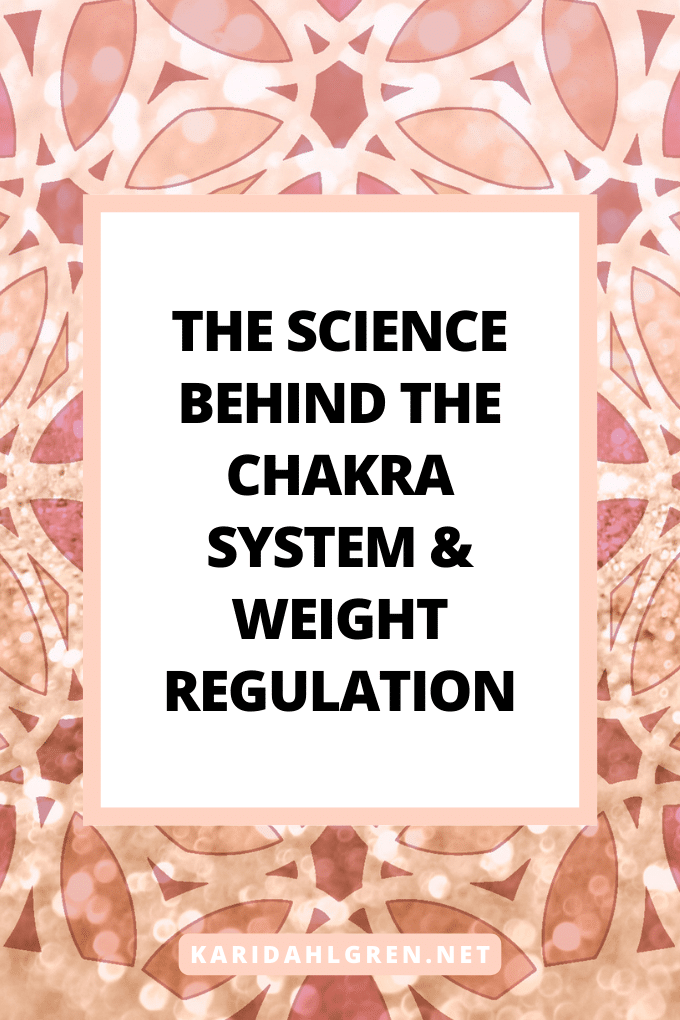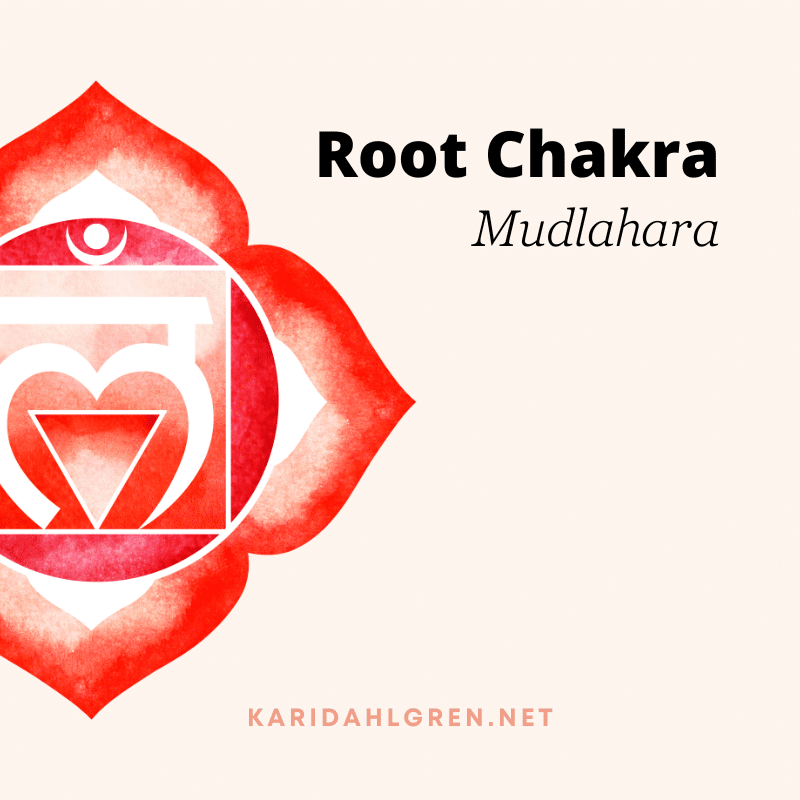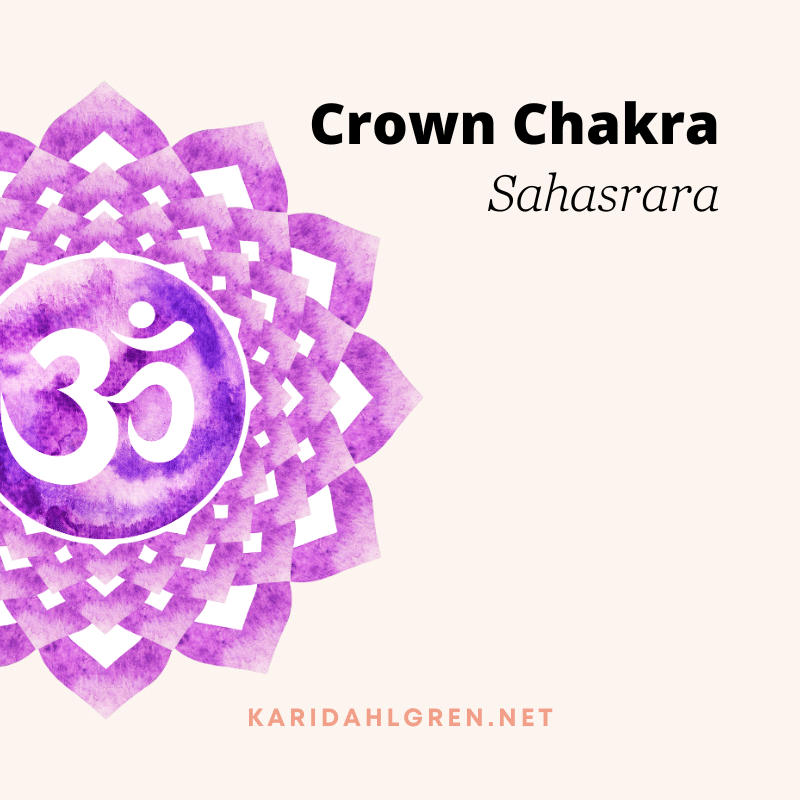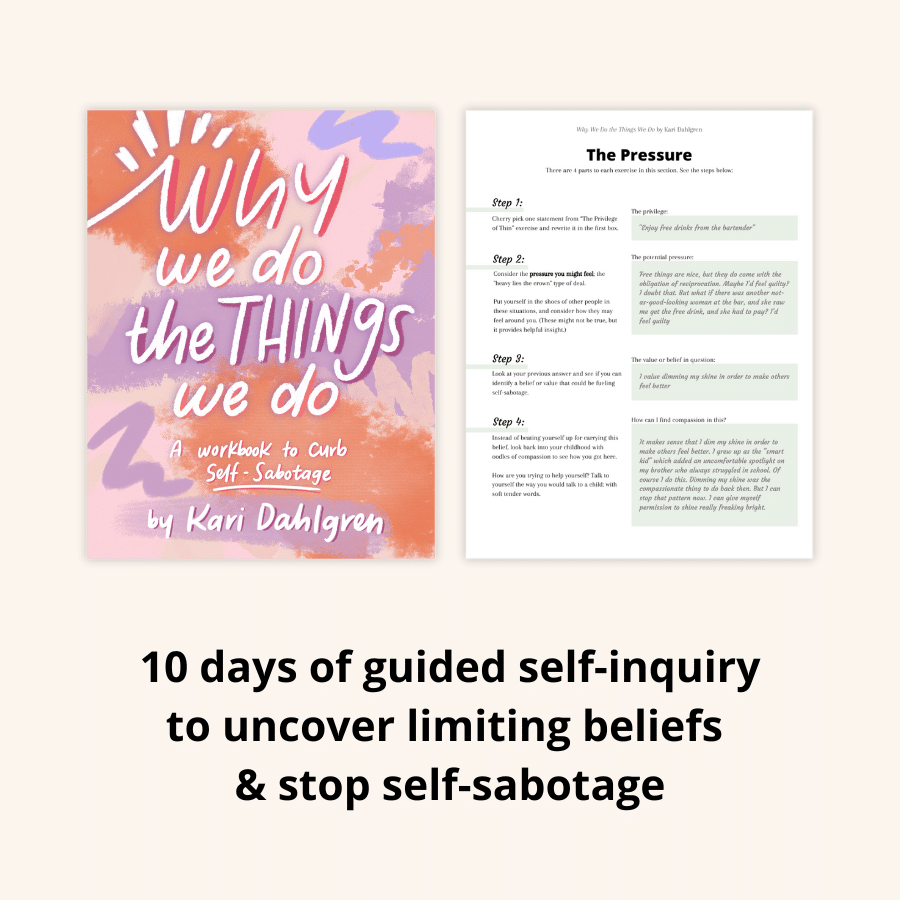
If you’ve found yourself here, reading about the intersection of chakras and weight loss, chances are you’re not just looking for another diet plan. You’re diving deeper, seeking something that addresses not just the body, but the spirit and mind as well.
As an eating psychology coach that specializes in a psycho-spiritual approach to stop compulsive eating, I’m excited to dig into this topic together. The idea that our spiritual health could impact our physical health isn’t new, but it’s gaining traction among those who feel that modern diet and exercise regimens don’t address the full picture.
In this article, you’ll discover the subtle energy body and its chakras, exploring how imbalances in these energy centers can manifest as physical symptoms. We’ll delve into the spiritual roots of weight gain, chakra by chakra, and discuss ways to rebalance your energy system, reduce stress, and nurture self-care.
What Are Chakras & The Subtle Energy Body?
If you’ve ever attended a yoga class, participated in meditation sessions, or explored alternative healing therapies, you might have heard the term “chakra” mentioned in passing. But what exactly are chakras, and what is meant by the “subtle energy body”?
Chakras are often described as energy centers within the human body, integral to various traditions of Indian spirituality and healing. There are seven main chakras, each located at specific points along the body, from the base of the spine to the crown of the head. These centers are thought to be vortexes of energy that manage psychological qualities and bridge the physical with the spiritual.
The concept of the subtle energy body refers to a complex system of energy channels, known as nadis, that flow through the body. This system is not physical in the traditional sense but is considered vital to our life force or spiritual energy, known as prana. The subtle energy body is what connects the physical body to the chakras, allowing energy to flow between them.
Interestingly, the subtle energy body isn’t just a mystical concept from ancient texts. Modern meditation research has begun to connect these traditional models to contemporary neuroscience. For example, one study found that the subtle body model can be aligned with modern central nervous system maps.[1]
This highlights how the chakra system, while having deep spiritual roots, can be used as a practical framework for understanding how our bodies and minds interact at a neural level.
In everyday life, this means that when we talk about balancing our chakras or engaging in energy work, we are participating in practices that support both our mental and physical health by influencing our energy flow. These practices are not just about achieving spiritual growth but also about enhancing well-being and managing stress in a very real, tangible way.

Interested in the spiritual roots of eating habits? Climb down the rabbit hole in my free ebook The Spiritual Seeker’s Guide to Stop Binge Eating—it’s right up your alley.
Potential Benefits and Consequences of Pursuing Weight Loss
After understanding chakras and the subtle energy body, it’s crucial to consider the broader implications of focusing solely on chakras and weight loss versus overall well-being. While many pursue weight loss for various reasons, including health improvements, the journey often comes with a unique set of challenges that can impact both physical and mental health.
Here are some benefits of pursuing weight loss:
- Management of Chronic Conditions: For some individuals, losing weight can play a significant role in managing or improving chronic medical conditions such as diabetes, hypertension, and heart disease.
- Increased Physical Mobility: Weight loss can sometimes lead to improved mobility and less joint pain, facilitating a more active and engaging lifestyle.
Maintaining a healthy weight—which looks different for everyone and goes far beyond the metric of BMI, which is a poor indicator of health[2]—can improve overall physical functioning, making daily activities easier and potentially increasing quality of life.
Here are some potential consequences of actively pursuing weight loss instead of overall well-being:
- Heightened Risk of Disordered Eating: Focusing on weight loss can trigger or exacerbate disordered eating behaviors such as excessive dieting, obsessive calorie counting, or preoccupation with food that diminishes one’s quality of life. When left unaddressed, a drive for thinness is also a strong predictor of eating disorders.[3]
- Weight Cycling: Research indicates that efforts to lose weight often result in weight cycling—repeatedly losing and regaining weight—which can have psychological and physical repercussions including but not limited to depression and poor cardiometabolic health.[4], [5]
- Poor Body Image: Constant focus on weight loss can lead to dissatisfaction and negative perceptions about one’s body, potentially reducing overall self-esteem and well-being.
As we consider the pursuit of weight loss, it’s essential to balance these efforts with a holistic view of health that includes physical, emotional, and spiritual well-being. Seeking balance among the chakras and understanding the subtle body can provide us with tools to maintain this balance, ensuring that our journey towards health is as nurturing as it is effective.
The Role of Each Chakra in Weight Management
Each chakra governs specific physical, emotional, and spiritual functions. When one or more chakras are out of balance, it can serve as a metaphysical cause of overeating, manifesting in physical conditions such as weight gain or challenges in losing weight.
Let’s explore how each chakra affects weight management, highlighting what it looks like when they are out of balance and how equilibrium can be restored. After this list, we’ll dig into even more tips for balancing the subtle energy body in a way that promotes overall well-being.
Root Chakra (Muladhara)

The Root Chakra, situated at the base of the spine, forms our foundational sense of being grounded. When this chakra is out of balance, it may manifest as anxiety and insecurity, potentially perpetuating the link between trapped emotions and weight gain as one seeks comfort in overeating or retains body weight for emotional protection.
A balanced Root Chakra cultivates a strong sense of security and stability, which supports making healthier lifestyle choices and supports the journey beyond emotional eating.
Sacral Chakra (Svadhisthana)

Situated just below the navel, the Sacral Chakra is associated with our emotions and sexuality. An imbalance here might manifest as emotional instability, leading to habits like stress eating or inconsistent dietary patterns.
When balanced, the Sacral Chakra supports emotional resilience and a healthy relationship with pleasure, including the enjoyment of preparing food and the happiness of consuming food that nourishes both body and soul.
Solar Plexus Chakra (Manipura)

The Solar Plexus Chakra, found around the stomach area, is the center of personal power, self-esteem, and confidence. Imbalance in this chakra can result in poor body image (e.g. a proneness towards self-critical thoughts like “I feel fat”) and difficulties in maintaining a healthy weight.
Conversely, a balanced Solar Plexus Chakra enhances one’s willpower and the ability to follow through with health-related goals, such as eating according to internal body cues or moving your body in ways that you enjoy.
Channel your willpower effectively: Take my quiz to discover your eating psychology strength. Even if you struggle with overeating, we all have strengths, and I’ll show you how to build upon yours.
Heart Chakra (Anahata)

The Heart Chakra, located in the chest area, influences our ability to love and connect with others. An imbalance can lead to emotional eating as a way to fill an emotional void or to cope with feelings of loneliness. A well-balanced Heart Chakra encourages self-love and a proper balance of giving and receiving, which includes a healthy approach to eating and connecting with others.
Throat Chakra (Vishuddha)

Located in the throat, this chakra governs communication and expression. An imbalance may manifest as difficulty expressing oneself or an unhealthy relationship with food and eating. When the Throat Chakra is balanced, it fosters open and honest communication with oneself and others about needs and desires, including those related to food and lifestyle choices.
Third Eye Chakra (Ajna)

The Third Eye Chakra, situated on the forehead between the eyes, is associated with intuition and perception. If out of balance, it can disrupt one’s connection to their body’s natural hunger cues and lead to overeating or restrictive eating patterns.
A balanced Third Eye Chakra enhances intuitive eating, allowing one to be more in tune with their body’s needs and make personalized food choices that feel good while honoring physical well-being.
Crown Chakra (Sahasrara)

At the top of the head, the Crown Chakra connects us to higher states of consciousness. When unbalanced, it might lead to disconnection from the body and physical health. Balancing the Crown Chakra helps integrate spiritual practices that support overall well-being, including mindfulness practices that can positively influence eating habits and body image.
Practical Tips for Balancing Chakras
Various modalities can help align the chakras, promoting more centeredness and relaxation. Whether you’re dealing with stress, weight management, or seeking deeper spiritual connection, these practices offer practical tools that could have a profound impact on your overall well-being.
Here are some modalities that promote spiritual well-being:
- Yoga: Integrating chakrayoga can align and balance your chakras, promoting better physical and psychological health. A study noted significant improvements in participants practicing chakrayoga, suggesting benefits that extend beyond mere physical fitness.[6]
- Meditation: Healing meditation specifically targeted at chakras can help in reducing stress and enhancing mindfulness, contributing to effective weight management as shown in a controlled trial.[7]
- Urge Surfing: Urge surfing involves turning inward to attentively observe one’s emotions, which I consider a spiritual practice. My Stop, Drop, & Feel technique applies urge surfing to emotional eating, encouraging a deeper connection with one’s emotions and heightened tolerance for discomfort. Improved emotion regulation through urge surfing is associated with reduced overeating.[8] This highlights how the spiritual practice of turning inward can promote holistic well-being.
- Reiki: This energy healing technique has been shown to reduce stress and anxiety effectively, making it a valuable tool during stressful times.[9]
- Sound Healing: Using tools like tuning forks or singing bowls that correspond with chakra frequencies can help in restoring balance through the power of vibration and sound.[10]
- Acupuncture: This traditional Chinese medicine technique stimulates specific points related to the chakras and meridians, promoting energy flow and balancing bodily functions.
- Tai Chi and Qigong: These gentle martial arts forms improve energy flow (Qi) throughout the body, helping in the alignment and balance of chakras through slow, intentional movements.
- Chakra Tapping: This technique involves tapping specific chakra points while focusing on intentions or affirmations, helping to release blockages and restore energy flow.
Although research into chakra-balancing modalities is ongoing, there is clear evidence that these practices can significantly reduce stress, thereby positively affecting physical health.
Stress is widely recognized as a contributing factor to weight gain.[11] Engaging in chakra-focused activities, therefore, plays a crucial role not only in managing weight but also in boosting overall well-being by reducing stress and encouraging self-care.
Promoting Overall Well-Being: Body, Mind, & Spirit
As we conclude our exploration of chakras and weight management, it’s clear that true balance involves more than just the physical. This journey through the subtle energy body highlights how each chakra impacts not only our spiritual health but also our physical health and habits.
By understanding the spiritual roots of weight gain and employing strategies to align our energy centers, we can enhance our emotional, spiritual, and physical well-being. If you’re interested in a holistic approach to well-being, you’re in the perfect place! My personal approach to stopping compulsive eating is psycho-spiritual, and it’s very much up your alley. See for yourself below:



